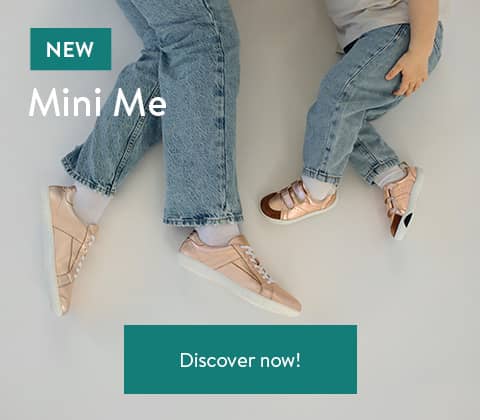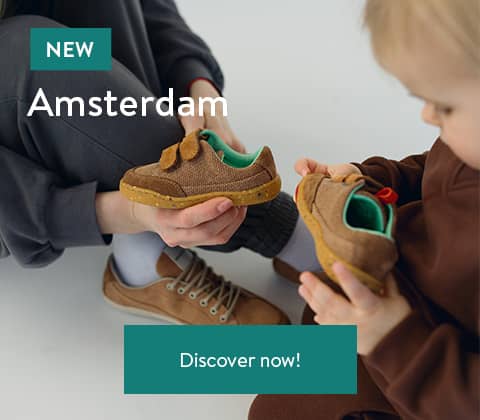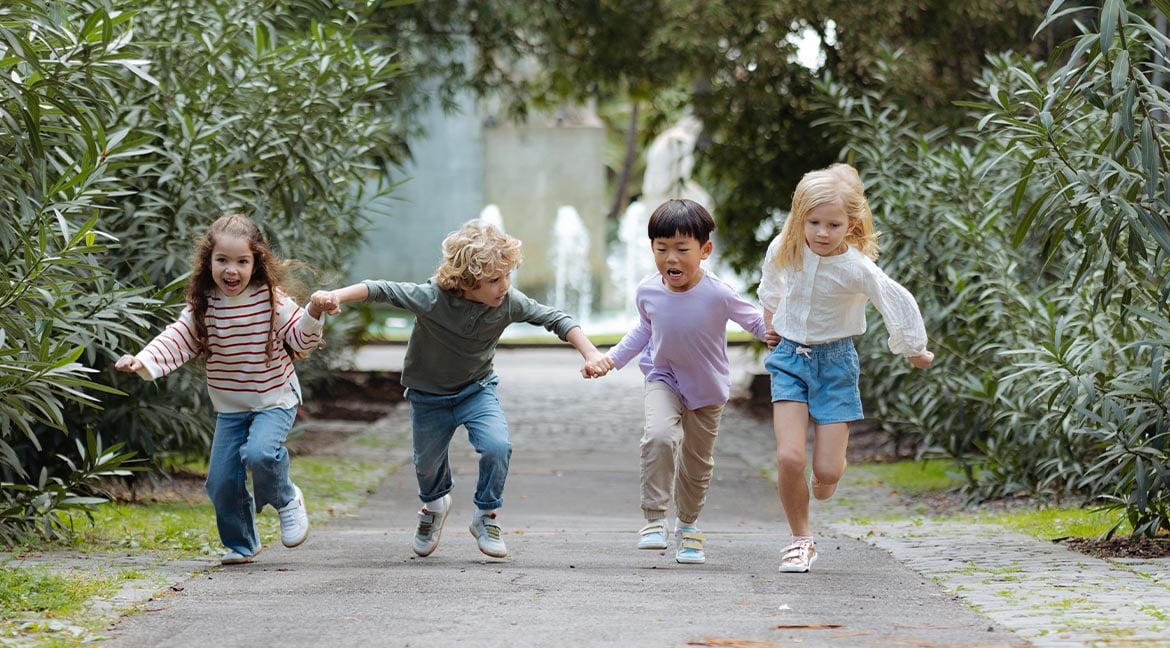Barefoot shoes vs. traditional shoes - which children's shoes do orthopaedists recommend?
From children's training shoes to boots - choosing the right shoes for your little one is essential for healthy foot development. But which children's shoes do orthopaedists recommend? Here are a few tips on what to look for when buying shoes for children.
Once they arrive, it usually doesn't take long for children to take their first steps. Most babies make their first steps between the 12th and 14th month of life. Some will already be walking at 8 to 10 months. As soon as children begin to explore the world on foot, the healthy development of their feet comes into focus. To ensure their strong and healthy development, children's feet need above all freedom of movement, contact with the ground, and lots of stimulation. Even the smallest foot muscles need to be trained and worked to prevent loss of functionality. Regularly walking barefoot on soft, uneven ground is good for this - in line with the motto: "if you learn to walk, you don't need shoes".
Whether barefoot or traditional - good children's shoes are light and flexible
In the first months of life, walking barefoot at all times is the healthiest for children. This will change when children begin to discover the world outside their door. Should your child continue to walk barefoot in the form of barefoot shoes, or should parents revert to traditional shoes? And what should you look for when buying children's shoes? "It is essential to ensure that the shoe fits well on the foot, without slipping. The toe box should be wide enough to comfortably fit all the toes next to each other - including the little toe. The big toe in particular should have room to straighten out," says Dr Caroline Werkmeister. The orthopaedist from Hamburg is a specialist in sports medicine and functional foot therapy. A flexible sole is also ideal, allowing the little foot to make the necessary change between flexible and firm during the gait cycle. "However, additional padding, support or an elaborate footbed can safely be dispensed with, as a healthy child's foot can perform these functions alone. It is much more important that the shoe is as light as possible and allows the child to perceive and experience the ground with their feet through their footwear," adds Werkmeister.
Good children's shoes - what are their characteristics and why are they so important?
Good children's shoes are essential if parents want to ensure healthy foot development from an early stage. Babies are usually born with healthy feet. In most cases, foot malpositions only develop over time - due to incorrect footwear. It is easy to squeeze little malleable feet into unsuitable shoes. Children also tend to pull in their toes when being measured with a device or through finger pressure by sales assistants. As the nerve cells in small children's feet are not yet properly developed, children who wear shoes that are too tight or too small do not really notice that their shoes are pinching. It is important that little feet have maximum freedom of movement in good children's shoes. This means that children's shoes must be soft and sufficiently large: "wearing suitable footwear supports the healthy development of a child's foot. Natural training of the foot muscles helps to strengthen them, leading to a regular formation of the foot shape and foot position. In addition, good children's shoes reduce the risk of functional foot malpositions and related injuries in the long term," says Dr Caroline Werkmeister. Firm insoles or even shoes that are too hard, however, can damage children's flexible feet. Sensitive soles that stimulate the soles of the fee are better: "the foot is a sensory organ with a dense arrangement of tactile cells in the sole. Stimulation of the soles of the feet promotes not only the motor system but also the non-motor parts of the brain, such as spatial awareness, also known as proprioception. In addition, there is evidence that sensory stimulation of the sole of the foot has a positive influence on the child's cognitive abilities," says the orthopaedist.
Healthy children's shoes and choosing the right shoe size for children
Whether traditional or barefoot shoes - children's feet are sensitive and quickly get out of shape if they are squeezed into footwear that is too tight. When choosing the right shoe size for children, shoe size charts are a good guide. However, parents should bear in mind that the allocation of the child's age to the appropriate shoe size is just as individual as the child itself. From birth, babies have feet of different sizes, and their shoe size varies with the speed of growth. As a rough guide: on average, a toddler's feet grow about 1.5 mm per month. It is therefore all the more important that children's feet are measured regularly. In our article "What is the right shoe size for my child?" you can read how to measure your child's feet and determine the right shoe size.
Groundies barefoot shoes for kids - thin sole, flexible material, wide toe box
What benefits adults also benefits children: barefoot shoes for children have the advantage that they seamlessly extend the phase of "original barefoot walking" and ensure that the small foot muscles continue to be trained. With barefoot shoes, the foot has to work more than in conventional shoes: this not only trains the foot muscles, but also has a positive effect on the entire musculoskeletal system. In addition to their well-known characteristics of a thin, sensitive sole and a flexible material, Groundies barefoot shoes for children have the additional benefit of a wide toe box. This means that children's feet also have plenty of room to develop healthily in barefoot shoes. Among our Groundies barefoot shoes for children, two classics are, for example, xxx and xxx.
The best children's shoes - a 5-point checklist for healthy children's feet
-
Flexibility
Children's shoes should be light and flexible so that the child's foot can roll easily without interference. If you bend the child's shoe upwards with your hand, the resistance should not be too great. -
Firm hold
Jumping, hopping, running - a good children's shoe should offer stability as well as flexibility. The sides of the shoe should therefore provide support so that the small ankle joint is protected. -
Right size
It is essential that children wear shoes in the right size. In particular, children's shoes that are too small can cause problems at an early age and lead to foot malpositions later on. As a general rule, toddlers and beginner walkers should have nine to 12 mm of space in front of the big toe. This corresponds roughly to the size of a cent coin. -
Sufficient space in the toe area
Both the length as well as the width of a child's shoe is hugely important, allowing the foot and in particular the toes to move freely and unhindered. As toddlers' feet grow on average 1.5 mm per month, it is important that children's feet are measured regularly and correctly. With a shoe template, for example. -
Breathable materials
Children's feet sweat just like adults' feet, so even the smallest children's shoes need to be made using breathable materials. Leather and air-permeable textiles are recommended.














